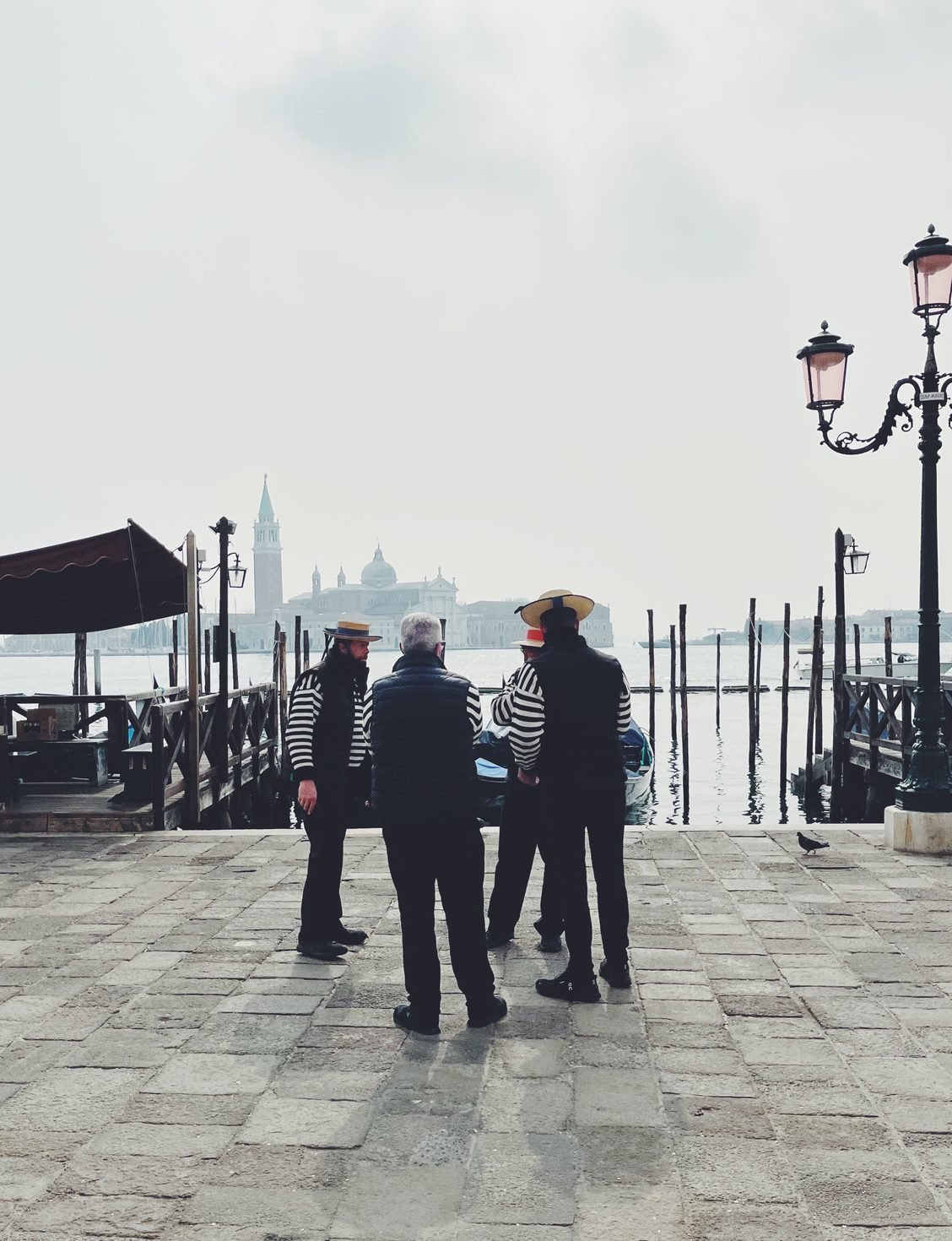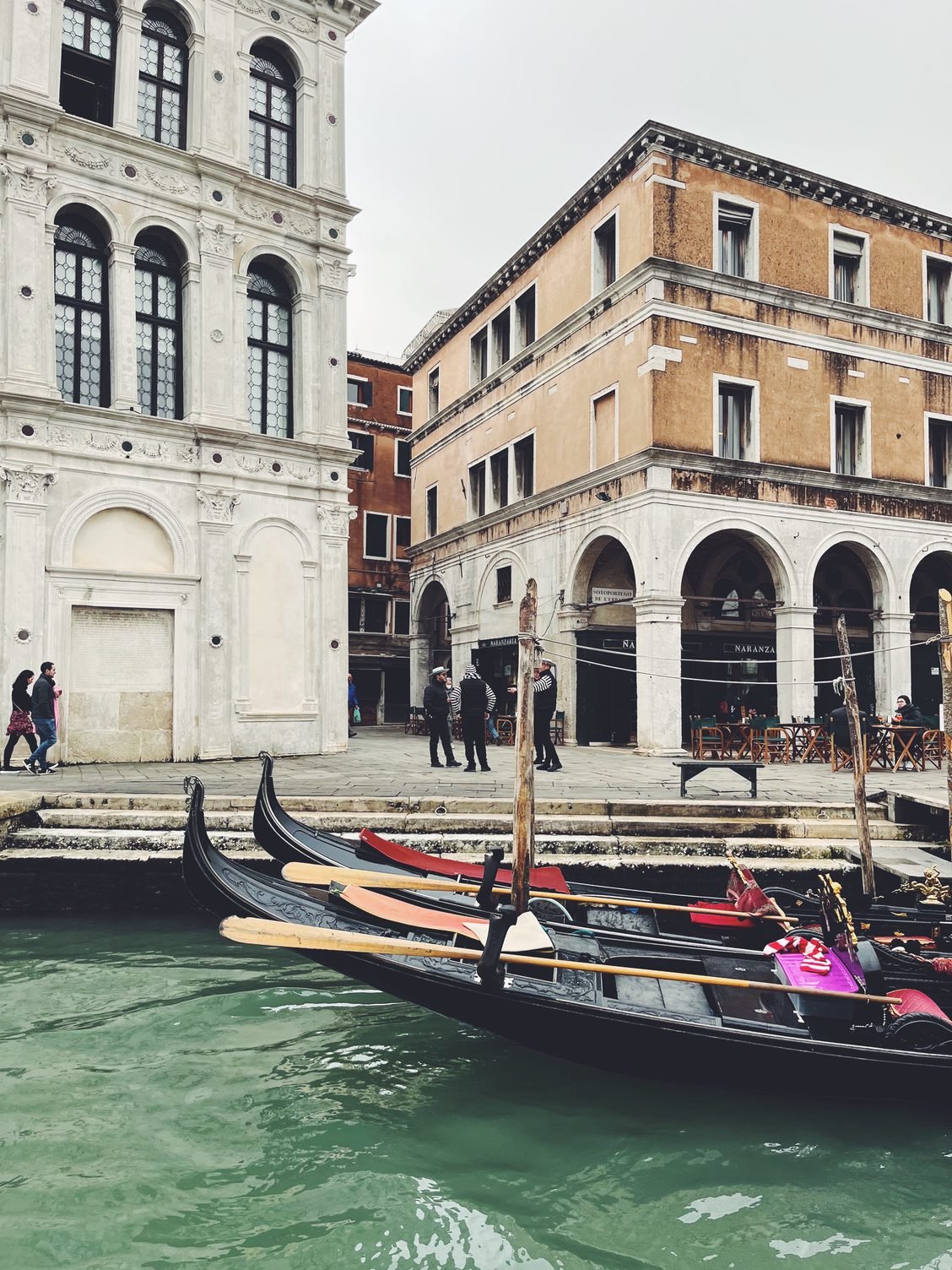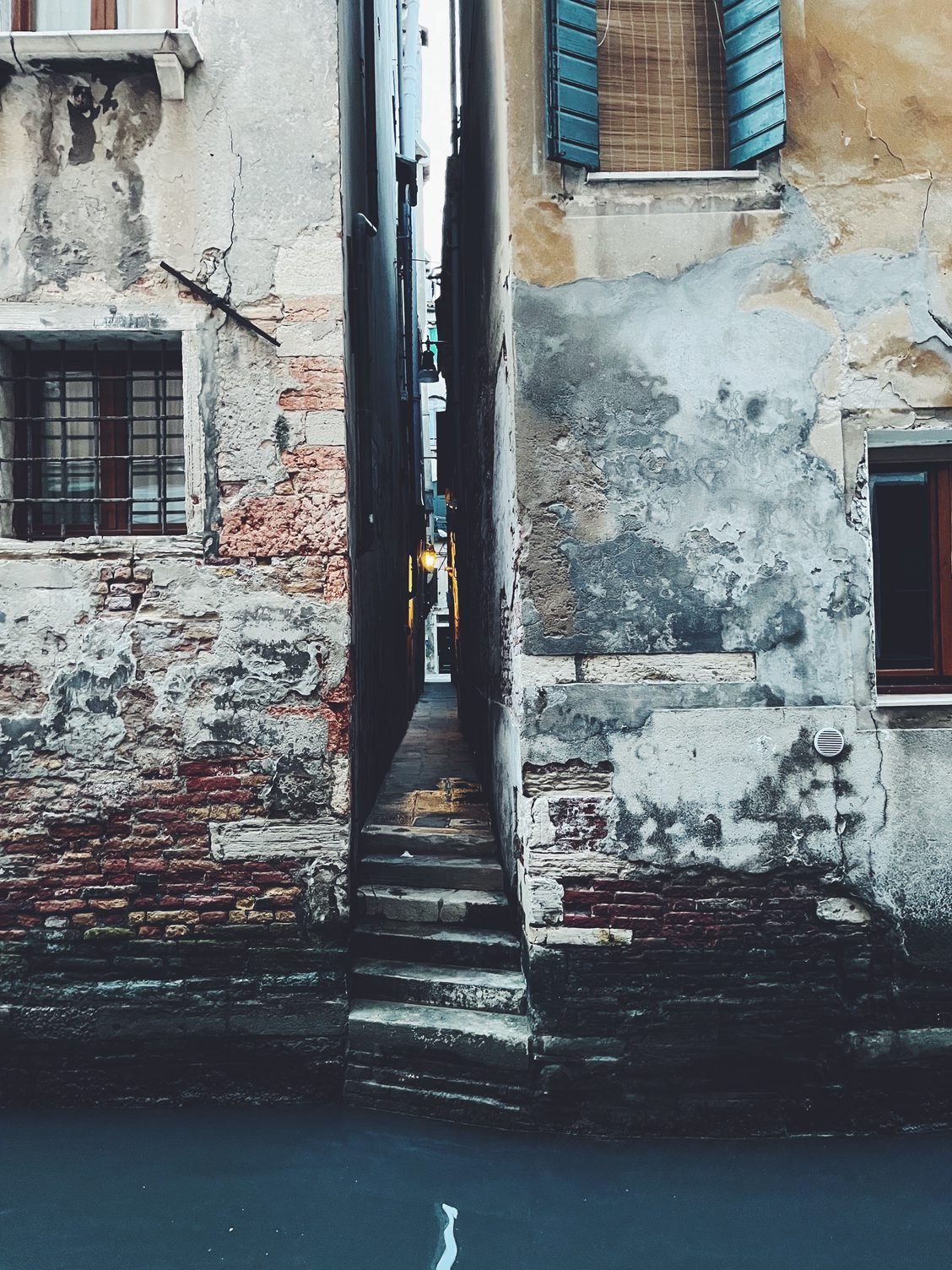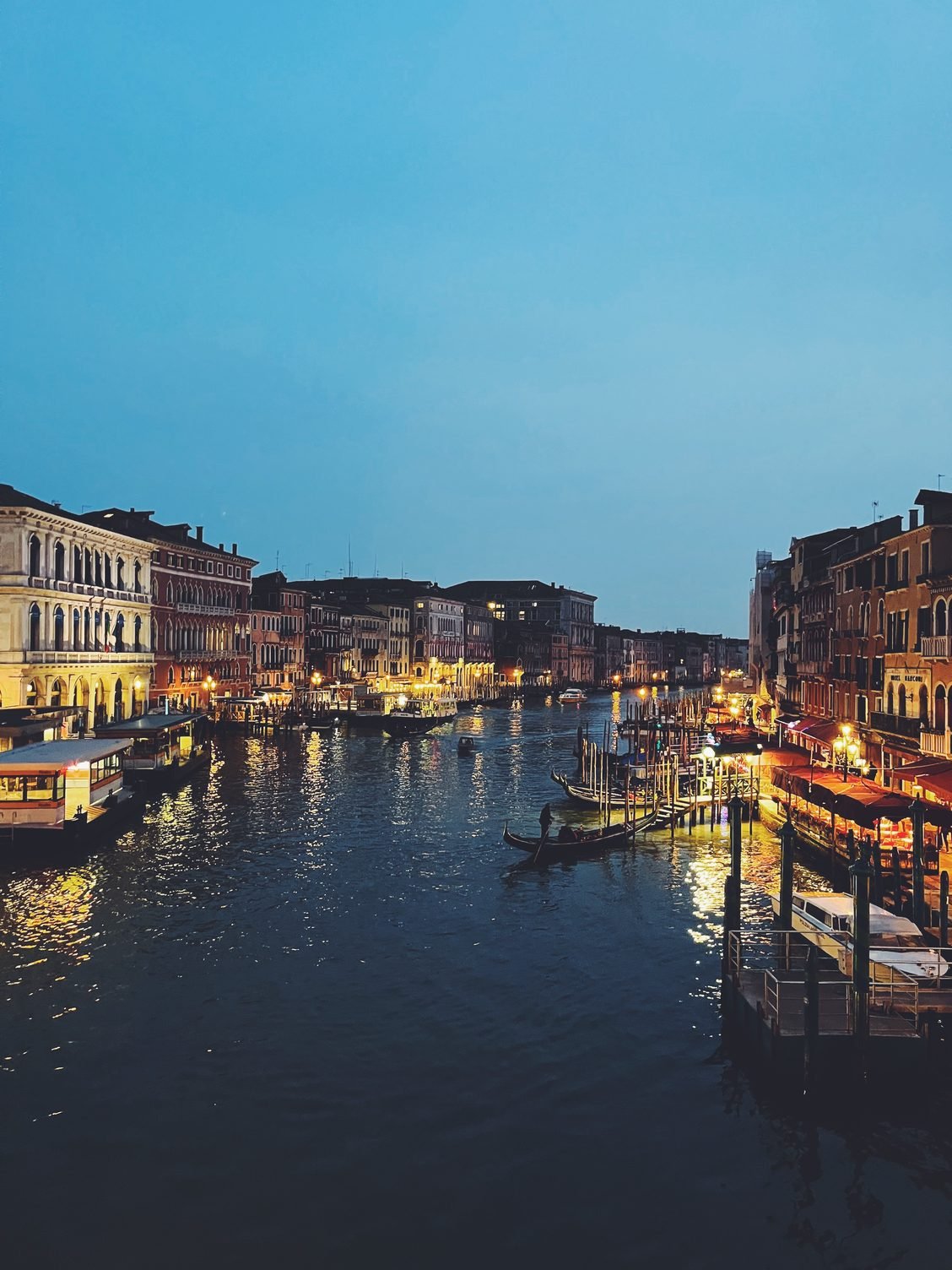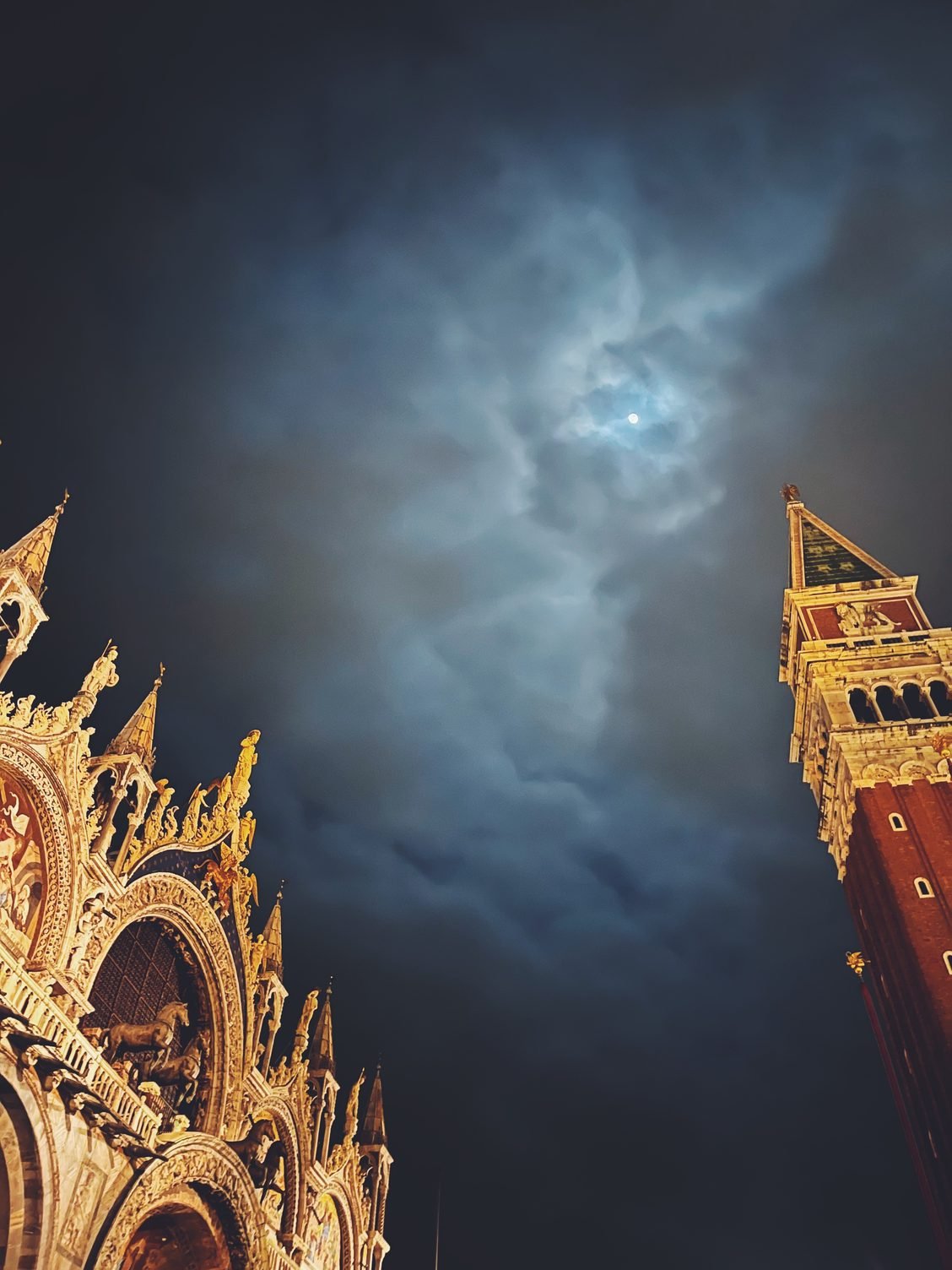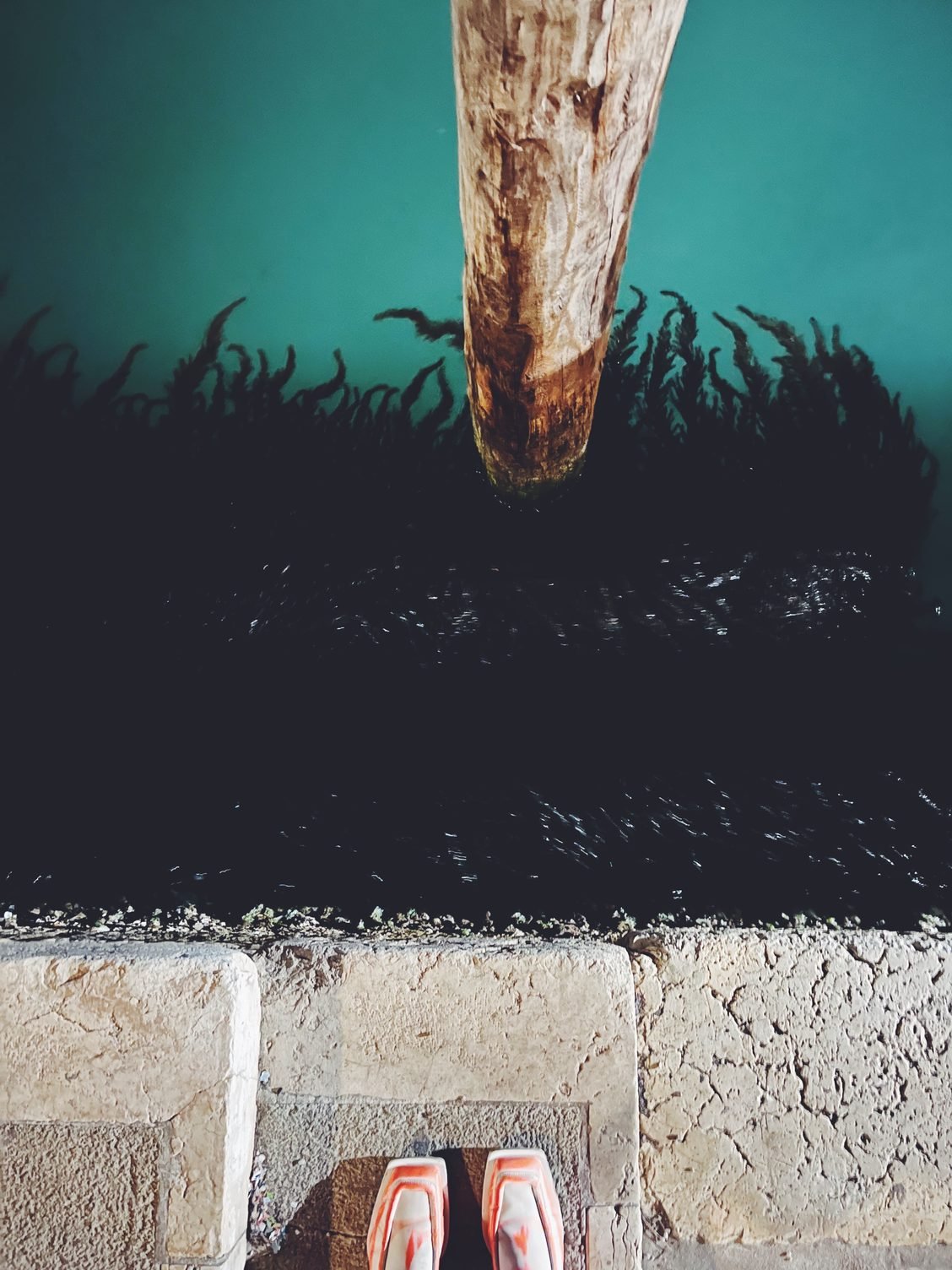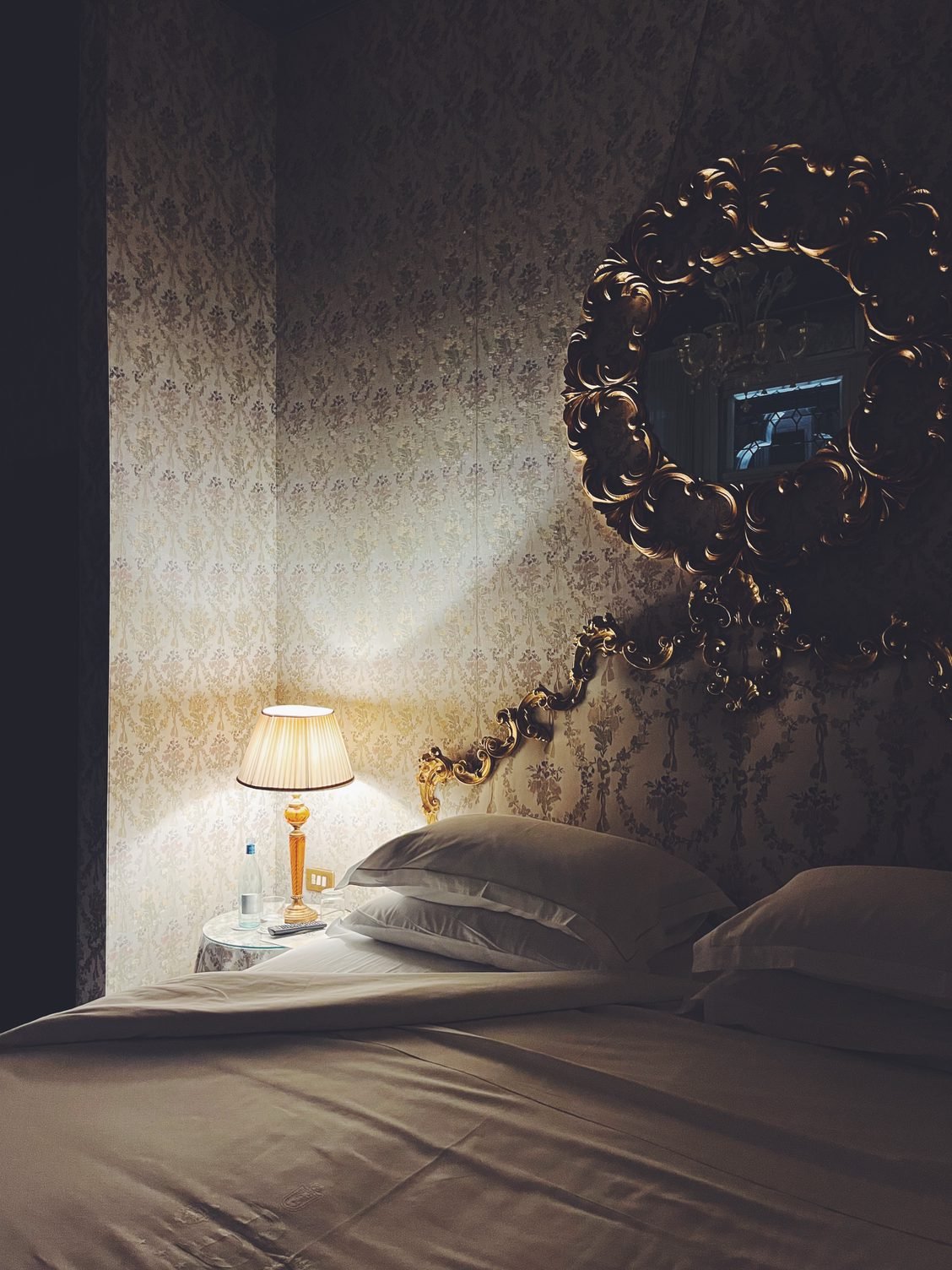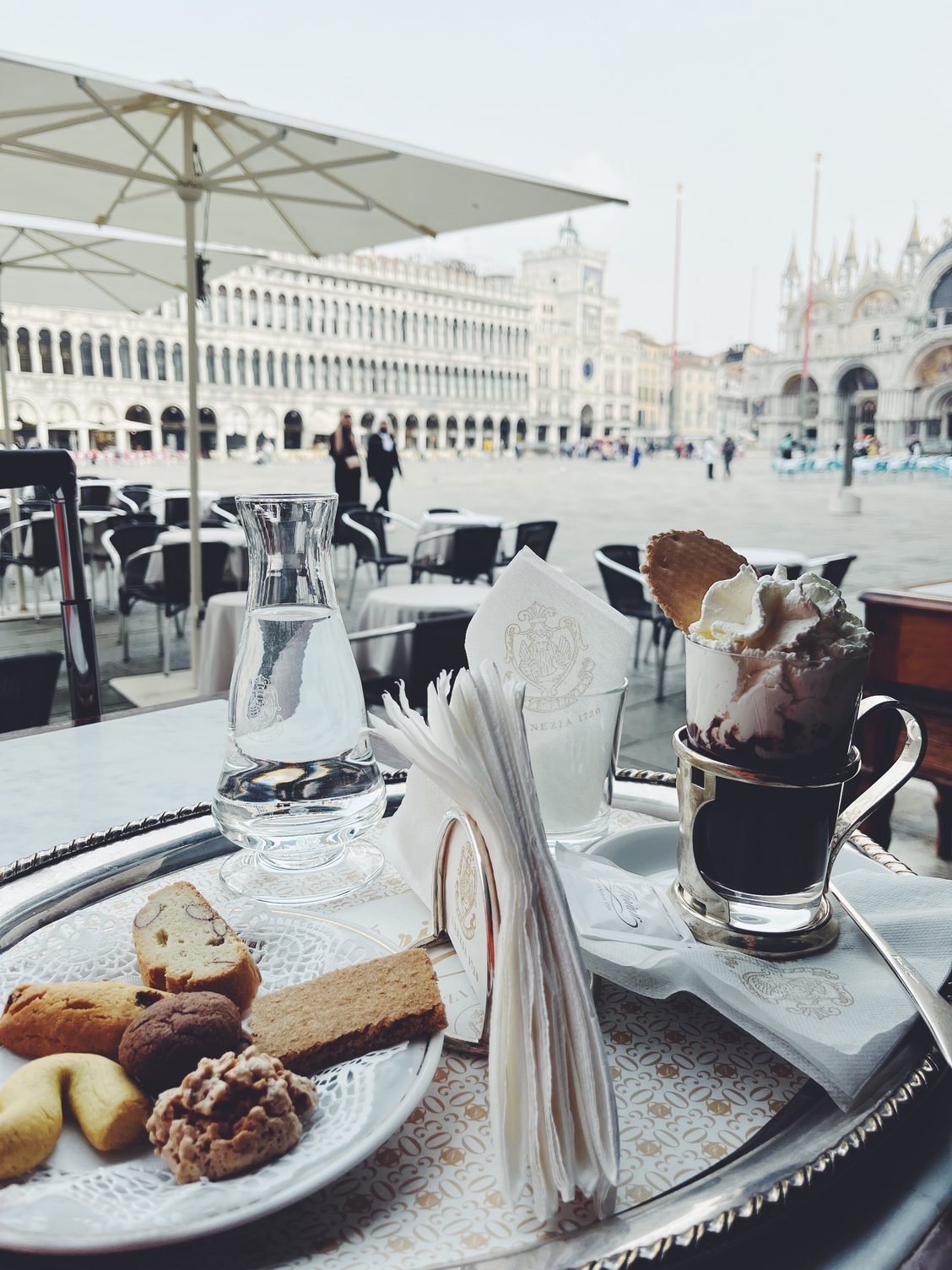Laguna (Lagoon)
Nothing will come of nothing
Thank you for following along during the past few days on my travels. I’m currently on a train to Rome (stopped in Florence), trying to put my last 24 hours in Venice into words.
A unsuspecting lagoon that became the richest city in the world for hundreds of years, the playground for Casanova, and home to the most important art event in the world, La Biennale—Venice is a jewel slowly crumbling back into the sea it sprang from.
I planned for nothing but a lot of walking and a splurge of a hotel room.
Like many other port cities, Venice is married to the sea. Unlike many of these places, there are few vestiges of normal life to be seen—there are no cars, bikes, or trams. Everything is either made here or has to be transported by boat.
The main ways to get around are by foot or vaporetto, a sort of water bus. Of course, there are gondole if you want the full Venice experience—I’m saving that for another trip with someone special. With a day pass for 20 euros, I went with the vaporetto and feet option. I love public transport, but I love it even more when it’s by boat.
As soon as I stepped out of the train station onto the vaporetto, I was transported. Anything I’m going to say about Venice has been said before. There is nowhere else quite like it. It’s magic.
With different shoes, I could’ve wandered for more than the five hours I put in—but as the sun was setting, the canals started to take on a new life. I imagined the romances, murders, and intrigues that could easily have taken place with no one knowing. I realized it was time to try and find dinner.
Similar to my time in Como, several of the places I had bookmarked were closed for the day or for the season altogether. I had been craving pasta nero di seppia (squid ink pasta) since the last time I was in Venice, nearly a decade ago. I made this was my last mission for the day.
I found a place in Castello that had good reviews, so I hopped on the vaporetto to the Giardini—a series of gardens that are a lingering remnant of the Napoleonic days. I enjoyed a gorgeously simple tuna tartare and then finally got my pasta.
As I was enjoying my conquest, I nosily listened to the chatter of the table next to me. Based on the context clues* I guessed that maybe these two women were working at the Biennale. And I was right! I realized that I had inadvertently ventured into the “Olympic Village” of the art world as they prepared to open the exhibition in the next couple of months.
*Irish ladies, talking about how their job was making something from nothing, proximity to the Giardini and Arsenale, some feedback about a forklift driver
Over the next two and a half hours I talked with this year’s artist and curator of the Irish pavilion of the Venice Biennale, Niamh O’Malley and Clíodhna Shaffrey. (They technically don’t have their own pavilion because #colonialism.)
Topics covered anything and everything—the power of art, Ukraine, how we would assassinate Putin if we had the chance (probably shouldn’t email about that), the state of the pandemic in our respective countries, the Pantheon, swimming in the ocean, how absurdly brilliant Venice can be, Shakespeare, and Beckett. (I had nothing to contribute on Samuel Beckett so that’s next on my personal curriculum.)
They were both wearing worksuits their friend made called Siren Suits, which I am buying as soon as possible. Flame resistant with an extra long zip for lady stuff—I’m a fan. Above, Niamh in her harness and Siren Suit during install earlier that day.
Something came of nothing in this case—to misquote Clíodhna via Shakespeare.’s King Lear. If I end up at the Venice Biennale this year when it opens, I’ve been promised a book and tote bag.
I walked back to my hotel via Piazza San Marco, feeling Venice flow into me.
Before my train to Rome, I was sure to stop for a hot chocolate at Caffè Florian, the oldest café in Europe. Oh yeah, and Casanova used to hang here.

